Mr. Kirimoto's Business Card Case
| Item Number | tk000902 |
| Item Name | Mr. Kirimoto's Business Card Case |
| Price | Black (traditional smooth finish): 36,750 yen |
| Limited | Check "Time to delivery" |
| Size | W99mm x D62mm x H11mm |
| Material | Wood (a variety of cypress), cloth, lacquer |
| Payment Methods | PayPal |
| Shipping | Shipping costs will be emailed after order (all items ship from Japan) |
| Time to delivery | Traditional: out of stock |
| Notes | Returns are not accepted. |
| Buyer | Mikayama |
Meeting a card case
The first time I met this card case was about a year and a half ago.
I was in Kanazawa at the time, and a friend of mine, Otsu, had just introduced me to Mr. Kirimoto. Of course one of the first things we did was exchange business cards. He reached inside his chest pocket and pulled out a case I'd never seen before. I was simply surprised.
Typically I think of business card cases as being made out of leather or plastic. Occasionally out of steel. But there was something different about the material of this card case.
I proceeded to ask, "What's it made of?" to which Kirimoto replied, "lacquer".
At the time Mr. Kirimoto was carrying the mat version (textured) which surprised me again because I had thought of lacquer as only being polished.
"You'd be surprised by how hard lacquer is", and with that Kirimoto started scraping the case against the edge of a table.
I think of lacquer as being an expensive, high quality material. I was a bit taken aback by seeing a lacquer craftsmen being so tough with his beautiful creation.
That was our first meeting.
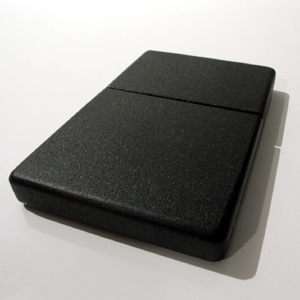
There is a strange feel to the material
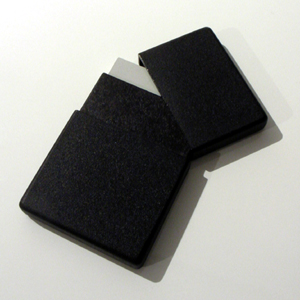
The top comes off to reveal your business cards
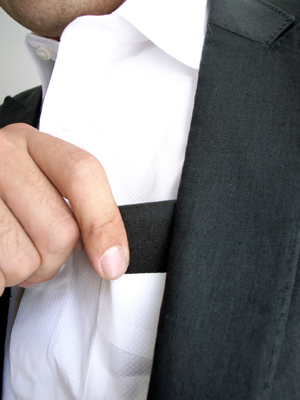
Just like when I first saw Mr. Kirimoto.
![]()
Various types of black lacquer
I'm going to introduce three types of card cases.
First, and my favorite, is the traditional smooth finish case at 36,750 yen. Linen is applied to the cypress, then comes Wajima lacquer, it is highly polished, yet soft and vivacious. To the touch it has a smooth, unique feel. The lacquer is susceptible to marks from keys and coins, but it'll be fine in your shirt pocket and for the meetings that count, you can't have a better friend.
Next is the case I first met, at 13,650 yen.
The mat case is the most durable of three, best for everyday use. Mr. Kirimoto showed me the case he's been using for several years, and it is mostly free of any damage. Lacquer is tough. Really.
To let a little secret out, the mat case is made slightly differently than its polished brother. The polished case is made in the traditional Wajima style, but the mat case is made with the Makiji style and is supposedly almost as difficult to mark up as glass. The character the mat case acquires is unique, I haven't seen many surfaces it.
Another variation on the Makiji style is the stripe case at 21,000 yen. The stripes are based from a kimono pattern, drawn by the famous Wajima lacquer craftsman Nakajima Kazuhiko. That's pretty unique. In the photo it looks like a wood grain, but to the finger the polished and unpolished surfaces give it a fascinating feel.
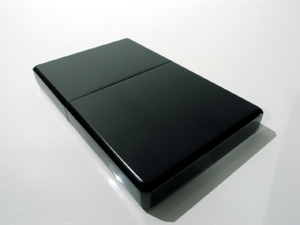
The sleek lacquer finish.
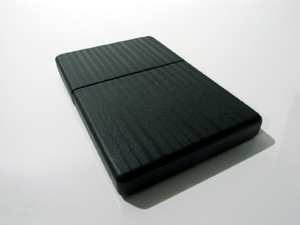
Stripe finish.
![]()
The mystery of Makiji
So about the thought of lacquer being soft. I imagine lacquer as a "high class", easy to scratch material; is Makiji really strong enough for everyday use?
First of all, what's Makiji? Makiji is made from the diatomaceous soil of Wajima which has been fired into a dirt powder and combined with lacquer. The powder is then applied (almost sprinkled on) while the lacquer is still wet. Once dried it is carefully polished. The process is repeated until complete. The ultra fine dirt actually acts like a nano sponge, mixing well with the lacquer and actually becoming stronger over time. It is nearly as strong as glass.
Well if it's so durable and the texture so good, why doesn't everyone do it? Well, polishing the hard surface is difficult and a mountain of work, so not many lacquer craftspeople bother. Having the idea to apply the technique to a card case was easy for Mr. Kirimoto, the next three years of trial and error to consistently produce a card case of acceptable quality was not.
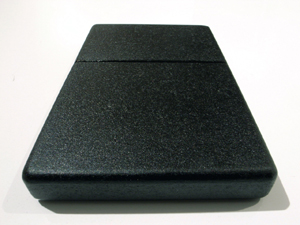
Textured finished.
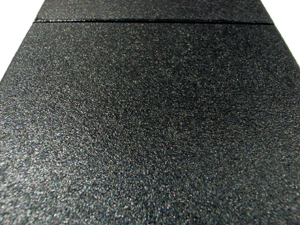
A closer look...
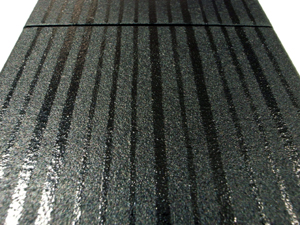
Another look at the stripe finish.
![]()
The special child of the lacquer world
So how about that Kirimoto Taiichi.
From the first time I met him I thought he was a bit mischievous, and well, he was. Maybe he is that special child?
The path to becoming successful in the lacquer world begins by being noticed in the wholesale world, and working your way from there to having your work sold at high end stores in Tokyo.
This guy started selling directly to customers, slowly gathering a following. Then all of a sudden a representative from Mitsukoshi (a famous department store in Tokyo) got in touch about doing a show at their main store in Nihonbashi. Frankly, he completely ignored how business is normally done in the lacquer world and established himself with his own two hands.
His goal wasn't to undermine and change the way business is done in the lacquer world, Kirimoto simply loved his material and spent hours to master difficult techniques to bring high quality products to customers.
He's got thick hands.
He's cool.
When I meet people like Mr. Kirimoto it makes me glad we started Mitsubai.
If you'd like to know more about Mr. Kirimoto:
> Wajima Kirimoto's homepage (Japanese)
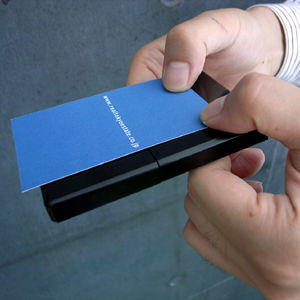
The luster looks bad ass when exchanging cards.
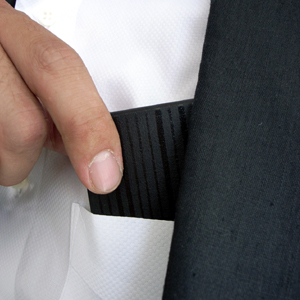
Flashing your stripes.